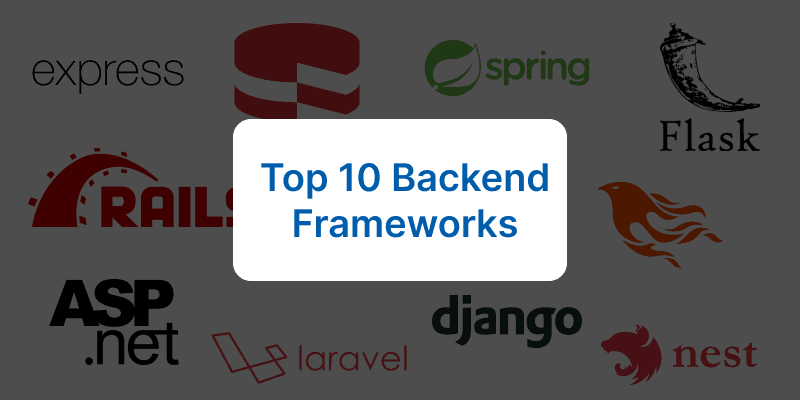
In backend development, choosing the right framework is crucial for application architecture, performance, and speed. Below, we explore ten popular backend frameworks, highlighting their key features, deployment options, and more.
1. Express.js
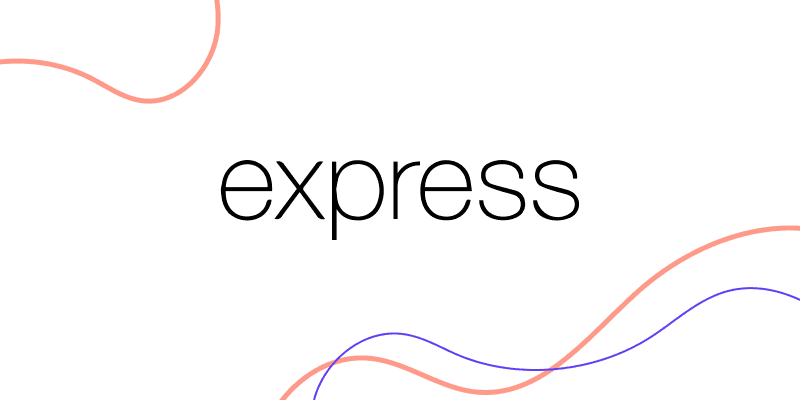
Express.js was created by TJ Holowaychuk in 2010. It uses JavaScript (Node.js) and quickly gained popularity for its simplicity and integration with Node.js. It now boasts over 56,000 stars on GitHub and is used by major companies like IBM, Uber, and Accenture.
Features
- Simple Setup: Easy to get started with.
- JavaScript: Use the same language for frontend and backend.
- Flexible: Add functionality with middleware.
- Efficient: Handles tasks without blocking other operations.
When to Use
- Lightweight Applications: Ideal for simple or small applications where you want a minimalistic framework.
- Node.js Environments: When working within a Node.js ecosystem.
- High Flexibility: If you need a highly customizable framework without many built-in features.
When Not to Use
- Complex Applications: For large-scale applications requiring extensive built-in features and structure, consider more comprehensive frameworks.
- Built-in Features: If you need many built-in functionalities, Express requires additional modules and setup.
Quick Start Examples
mkdir express-hello-world
cd express-hello-world
npm init -y
npm install express
Create an index.js file and add the following code:
const express = require('express');
const app = express);
app. get('/', (req, res) => {
res.send( 'Hello, World!');
}) ;
app. Listen (3000, 0) => {
console.log('Server is Running on port 3000`)
});
2. Django (Python)
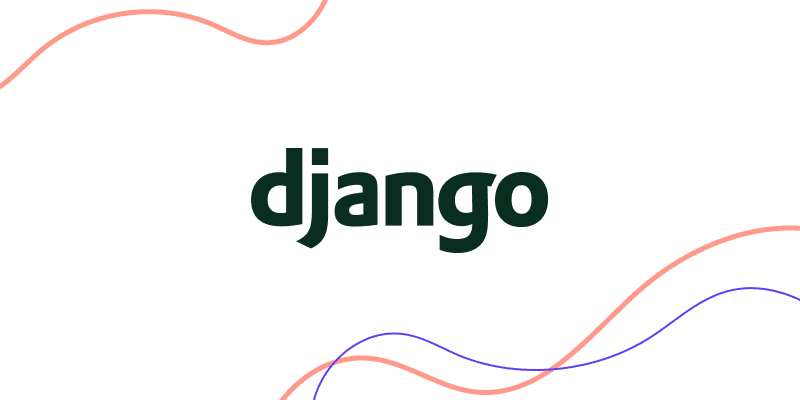
Django, created by Adrian Holovaty and Simon Willison in 2005, is a high-level Python framework known for rapid development and clean design. With over 60,000 stars on GitHub, it is used by companies like Instagram, Pinterest, and Spotify.
Features
- Batteries Included: Comes with built-in features like an admin panel and ORM.
- Security: Strong protections against common security threats.
- Admin Interface: Customizable for managing data.
- ORM: Simplifies database management.
When to Use:
- Rapid Development: Perfect for projects with tight deadlines due to its extensive built-in features and "batteries-included" philosophy.
- ORM Integration: Ideal if you prefer working with an object-relational mapper for database interactions.
- Secure Applications: Excellent for applications where security is a priority, as it comes with built-in protection against common vulnerabilities.
- Scalable Projects: Suitable for both small and large-scale applications due to its scalability and robustness.
When Not to Use:
- Lightweight Applications: Might be overkill for simple applications due to its comprehensive nature.
- Flexibility: If you need a highly flexible framework with minimal constraints, Django’s structured approach might feel restrictive.
- Learning Curve: May not be the best choice for beginners due to its steep learning curve.
Quick Start Examples
Install Django:
pip install django.
Create a new project: django-admin startproject helloworld.
Create a view in helloworld/views.py
from django.http import HttpResponse
def hello_world(request) :
return HttpResponse('Hello, world!')
Map the view in helloworld/urls.py:
from django.urls import path from .Views import hello_world
ur lpatterns = [
path('', hello_world),
]
3. Flask (Python)

Flask, created by Armin Ronacher in 2010, is a lightweight Python framework known for its simplicity and flexibility. With over 62,000 stars on GitHub, it is used by companies like LinkedIn, Netflix, and Reddit.
Features
- Simplicity: Lightweight with full control over components.
- Flexibility: Choose your own tools and libraries.
- Easy to Learn: Ideal for small to medium-sized projects.
- Modular: Extensible with various extensions.
When to Use:
- Microservices: Ideal for building microservices or small applications with specific functionalities.
- High Flexibility: Perfect if you need a framework that provides high flexibility and minimalism.
- Prototyping: Excellent for rapid prototyping and small-scale projects where simplicity is key.
When Not to Use:
- Large Applications: Not suitable for large-scale applications requiring extensive built-in features and structure.
- Built-in Features: If you need many built-in functionalities, Flask requires additional extensions and setup.
- Complex Projects: For complex projects, managing extensions and ensuring cohesive functionality can become cumbersome.
Quick Start Examples :
from flask import Flask
app = Flask(__name_)
@app. route('/')
def hello_world:
return 'Hello, World!'
if _name_ == '_main_':
app. run (debug=True)
Create a new directory for your project:
mkdir flask-hello-world
cd flask-hello-world
Create a virtual environment (recommended):
python -m venv venv
Activate the virtual environment:
venv\Scripts\activate
source venv/bin/activate
Install Flask:
pip install Flask
4. Ruby on Rails (Ruby)
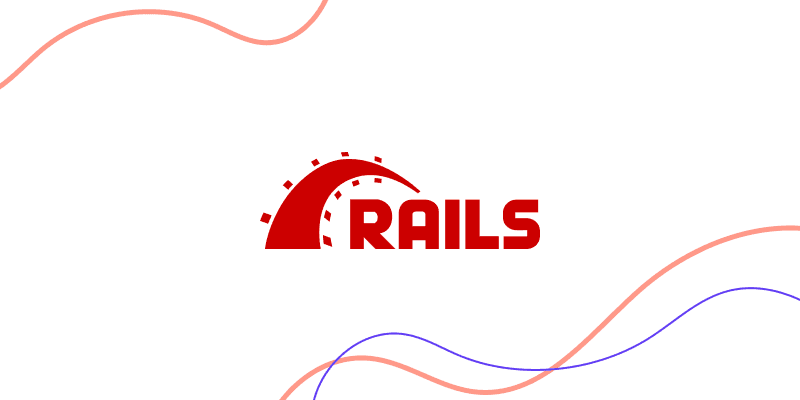
Ruby on Rails, created by David Heinemeier Hansson in 2004, is known for its convention-over-configuration philosophy. With over 51,000 stars on GitHub, it is used by companies like Airbnb, GitHub, and Shopify.
Features
- Convention over Configuration: Accelerates development with sensible defaults.
- Rich Ecosystem: Extensive libraries and community support.
- Rapid Development: Quick prototyping with built-in tools.
- Testing: Strong automated testing support.
When to Use:
- Rapid Development: Ideal for projects with tight deadlines due to its convention over configuration approach and extensive built-in features.
- Startups and MVPs: Perfect for startups and building minimum viable products (MVPs) quickly and efficiently.
- RESTful Applications: Excellent for building RESTful web applications with its powerful routing system.
- Active Community: Great if you want a framework with a large, active community and a wealth of available gems (libraries) to extend functionality.
When Not to Use:
- Performance-Intensive Applications: Not the best choice for applications requiring extremely high performance and low latency, as it may not be as fast as some other frameworks.
- Complex, Non-Standard Applications: If your application requires a lot of unconventional configurations or deviates significantly from the typical web application model, Rails' conventions may become a hindrance.
- Learning Curve: While easier than some frameworks, there is still a learning curve associated with Rails, particularly for developers unfamiliar with Ruby.
- Scalability Concerns: For very large-scale applications, some may find Rails challenging to scale compared to other frameworks designed with scalability in mind.
Quick Start Examples
Install Rails (if not already installed):
gem install rails
Create a new Rails application:
rails new hello_world_app
cd hello_world_app
Generate a controller for the "Hello, World!" example:
rails generate controller HelloWorld index
Edit the app/controllers/hello_world_controller.rb file to look like this:
class HomeController ‹ ApplicationController
def index
render plain: 'Hello, World!' end
Edit the config/routes.rb file to add the root route:
Rails.application.routes.draw do
root 'home#index'
end
Run the Rails server:
rails server
5. Spring Boot (Java)
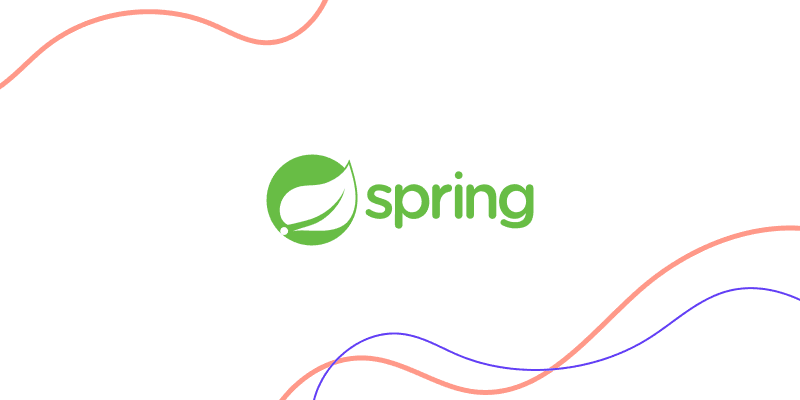
Spring Boot, introduced by Pivotal Software (now part of VMware) in 2014, is a comprehensive Java framework designed for enterprise applications. It has over 70,000 stars on GitHub and is used by companies like Netflix, Amazon, and Google.
Features
- Comprehensive: Extensive features and configurations.
- Scalability: Suited for large-scale applications.
- Strong Ecosystem: Benefits from the robust Java ecosystem.
- Microservices: Supports microservices architecture.
When to Use:
- Enterprise Applications: Ideal for large-scale enterprise applications due to its robust ecosystem and scalability.
- Microservices: Excellent for building microservices with its built-in support for microservice architecture.
- Java Ecosystem: Perfect if you are already working within the Java ecosystem and want to leverage Java's capabilities.
When Not to Use:
- Lightweight Applications: Overkill for simple or small applications due to its extensive feature set.
- Learning Curve: Can be complex to set up and manage, making it less suitable for beginners or quick projects.
- Resource Intensive: Requires more resources and memory, which might not be ideal for minimalistic environments.
Quick Start Example:
Create a new Spring Boot application:
Use the Spring Initializr to generate a new project.
Project: Maven Project
Language: Java
Spring Boot: (Choose the latest stable version)
Dependencies: Spring Web
Project Metadata: Fill in as desired (e.g., Group: com.example, Artifact: hello-world)
Download the generated .zip file and extract it.
Navigate to the project directory:
cd hello-world
Open the src/main/java/com/example/helloworld/HelloWorldApplication.java file and add the following code:
package com.example.helloworld;
import org.springframework.boot.SpringApplication;
import org.springframework.boot.autoconfigure.SpringBootApplication;
import org.springframework.web.bind.annotation.GetMapping;
import org.springframework.web.bind.annotation.RequestMapping;
import org.springframework.web.bind.annotation.RestController;
@SpringBootApplication
public class HelloworldApplication {
public static void main(String[] args) {
SpringApplication.run(HelloworldApplication.class, args);
}
@RestController
@RequestMapping("/")
class HelloworldController {
@GetMapping
public string helloworld() {
return "Hello, world!";
}
Build and run the application
./mvnw spring-boot:run
mvn spring-boot:run
6. ASP.NET Core (C#)
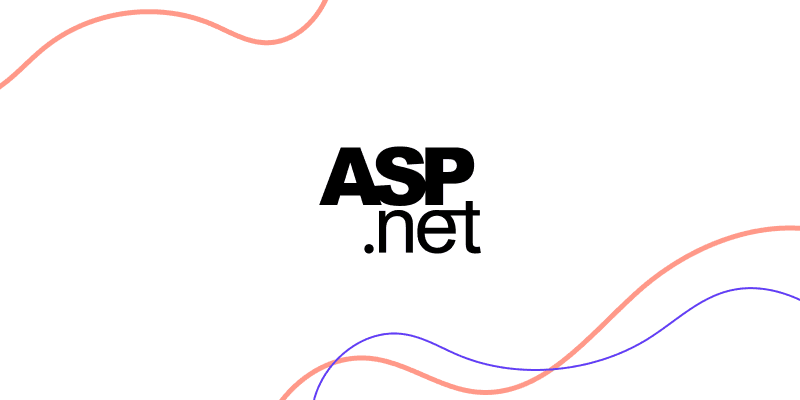
ASP.NET Core, created by Microsoft in 2016, is a high-performance C# framework with cross-platform support. It has over 32,000 stars on GitHub and is used by companies like Stack Overflow, Microsoft, and Alibaba.
Features
- Performance: High performance with asynchronous programming support.
- Cross-Platform: Runs on Windows, Linux, and macOS.
- Integration: Seamless with Microsoft tools.
- Modular: Greater flexibility.
When to Use:
- Cross-Platform Development: Great for developing cross-platform applications that run on Windows, macOS, and Linux.
- Enterprise Applications: Suitable for large-scale enterprise applications with its extensive feature set and performance.
- Microsoft Ecosystem: Ideal if you are already invested in the Microsoft ecosystem and want seamless integration.
When Not to Use:
- Lightweight Applications: Might be too heavy for simple applications due to its comprehensive nature.
- Learning Curve: Has a steeper learning curve, which might not be ideal for quick projects or beginners.
- Cost Considerations: Some features and tools may come with licensing costs that can add up for larger teams.
Quick Start Example:
Install .NET SDK (if not already installed):
Download and install the .NET SDK from the official .NET website.
Create a new ASP.NET Core application:
dotnet new web -o HelloWorldApp
cd HelloWorldApp
Open the Program.cs file and update it to look like this:
using Microsoft.AspNetCore.Builder; using Microsoft.AspNetCore.Hosting;
using Microsoft.Extensions.Hosting;
var builder = WebApplication.CreateBuilder(args);
var app = builder. Build);
app. MapGet("/", () => "Hello, World!");
app. Run () ;
7. Laravel (PHP)
Laravel, created by Taylor Otwell in 2011, is a modern PHP framework known for its elegant syntax and built-in features. With over 73,000 stars on GitHub, it is popular among companies like 9GAG, Pfizer, and BBC.
Features
- Elegant Syntax: Clean and enjoyable development experience.
- Built-in Features: Includes routing, ORM, and templating.
- Community: Strong support and available packages.
- Security: Modern security practices.
When to Use:
- Rapid Development: Excellent for rapid development due to its expressive syntax and built-in tools.
- MVC Applications: Ideal for applications following the MVC architecture pattern.
- PHP Ecosystem: Perfect if you are working within the PHP ecosystem and want to leverage PHP's capabilities.
When Not to Use:
- Complex Applications: For extremely complex applications, Laravel's abstraction can sometimes be limiting.
- Performance: Not always the best choice for applications requiring high performance and low latency.
- Learning Curve: Might be challenging for beginners due to its conventions and structure.
Quick Start Example:
Install Composer (if not already installed):
Download and install Composer from the official Composer website.
Create a new Laravel application:
composer create-project --prefer-dist laravel/laravel hello-world-app
cd hello-world-app
Create a new route:
Open the routes/web.php file and add the following code:
use Illuminate\Support\Facades\Route;Route:: get('/', function () {return'Hello, World!';Run the Laravel development server:
php artisan serve
8. NestJS (TypeScript)
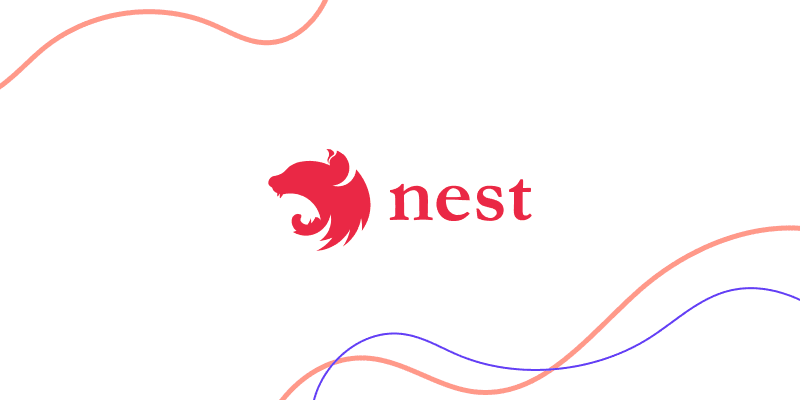
NestJS, created by Kamil Myśliwiec in 2017, is a progressive Node.js framework built with TypeScript. It has over 55,000 stars on GitHub and is used by companies like Adidas and Roche.
Features
- TypeScript: Provides type safety and modern JavaScript features.
- Modular Architecture: Supports scalable and maintainable applications.
- Built-in Features: Includes dependency injection, routing, and more.
When to Use:
- Scalable Applications: Ideal for building scalable and maintainable server-side applications.
- TypeScript: Perfect if you prefer using TypeScript for its type safety and modern JavaScript features.
- Microservices: Excellent support for microservice architecture and modular design.
When Not to Use:
- Lightweight Applications: Overkill for simple or small applications due to its extensive feature set.
- Learning Curve: Can be complex to learn and set up, which might not be ideal for quick projects or beginners.
- JavaScript Preference: If you prefer vanilla JavaScript over TypeScript, NestJS might feel cumbersome.
Quick Start Example:
Install Node.js (if not already installed):
Download and install Node.js from the official Node.js website.
Install the NestJS CLI (if not already installed):
npm install -g @nestjs/cli
Create a new NestJS application:
nest new hello-world-app
cd hello-world-app
nest generate controller hello
Update the src/hello/hello.controller.ts file to look like this:
import { Controller, Get } from '@nestjs/common';
@Controller)
export class HelloController f
@Get ()
getHello(): string {
return 'Hello, World!';
}
Update the src/app.module.ts file to include the new controller:
import { Module } from '@nestjs/common' ;
import { HelloController } from './hello/hello.controller';
@Module({
imports: [.
controllers: [HelloController],
providers: 0,
}
export class AppModule 1
Run the application:
npm run start or npm run start:dev(development)
9. CakePHP (PHP)
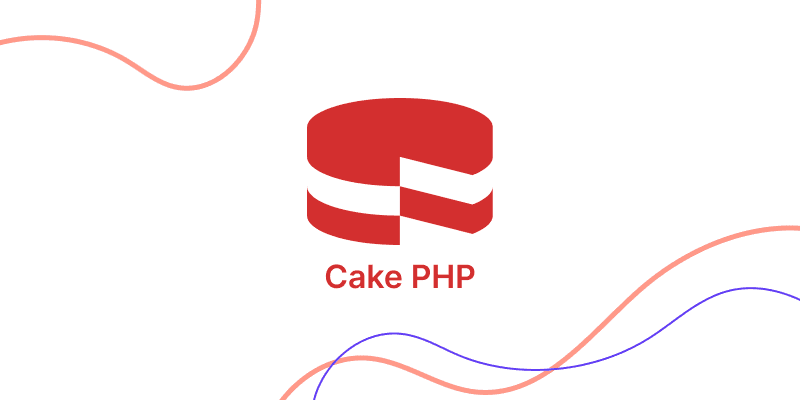
CakePHP, first released in 2005 by Cake Software Foundation, Inc., is a robust PHP framework known for its convention-over-configuration approach. With over 13,000 stars on GitHub, it is used by companies like BMW and Hyundai.
Features
- Convention over Configuration: Speeds up development with sensible defaults.
- ORM: Powerful ORM for database interactions.
- CRUD Scaffolding: Tools for generating basic application structure.
- Security: Includes features for security and protection against SQL injection.
When to Use:
- Rapid Development: Great for rapid development with its built-in tools and conventions.
- MVC Applications: Ideal for applications following the MVC architecture pattern.
- PHP Ecosystem: Perfect if you are working within the PHP ecosystem and want to leverage PHP's capabilities.
When Not to Use:
- Complex Applications: For extremely complex applications, CakePHP's conventions can sometimes be limiting.
- Performance: Not always the best choice for applications requiring high performance and low latency.
- Learning Curve: Might be challenging for beginners due to its conventions and structure.
Quick Start Example:
Install Composer (if not already installed):
Download and install Composer from the official Composer website.
Create a new CakePHP application:
composer create-project --prefer-dist cakephp/app hello_world_app
cd hello_world_app
Create a new controller:
Run the following command to create a new controller named HelloWorld: bin/cake bake controller HelloWorld
Update the src/Controller/HelloWorldController.php file to include a basic action:
<?php
namespace App\Controller;
use App\Controller\AppController;
class HelloworldController extends AppController
public function index()
Sthis->set( 'message', 'Hello, world!');
}
}
Create a view file:Create a file named index.php in the src/Template/HelloWorld/ directory with the following content:
<h1><?= h(Smessage) ?></h1>
Run the CakePHP development server:
bin/cake server
10. Phoenix (Elixir)

Phoenix, created by José Valim and the Elixir community, was first released in 2014. It is built on the Elixir language, running on the Erlang VM. Known for its performance and scalability, Phoenix is used by companies like Bleacher Report and the Financial Times.
Features
- Concurrency: Handles many tasks simultaneously with Elixir's lightweight processes.
- Real-Time Capabilities: Built-in support for WebSockets and real-time communication.
- Fault Tolerance: Inherits fault tolerance from the Erlang VM.
- Scalability: Highly scalable architecture for handling high traffic.
When to Use:
- Real-Time Applications: Ideal for building real-time applications such as chat apps, online games, or live dashboards.
- High Performance: Excellent for high-performance and low-latency applications due to Elixir's concurrency model.
- Scalability: Perfect for scalable applications that need to handle a large number of simultaneous connections.
When Not to Use:
- Lightweight Applications: Might be overkill for simple or small applications due to its comprehensive nature.
- Ecosystem: If you are not familiar with Elixir, the learning curve and ecosystem can be challenging.
- Tooling: May lack some of the mature tooling and libraries available in more established ecosystems like Node.js or Java.
Quick Start Example:
Install Elixir (if not already installed):
Follow the installation instructions on the official Elixir website.
Install Phoenix (if not already installed):
mix archive.install hex phx_new
Create a new Phoenix application:
mix phx.new hello_world_app --no-ecto
cd hello_world_app
Generate a new controller:
mix phx.gen.html HelloWorld HelloWorld hello_world message:string
Update the lib/hello_world_web/controllers/hello_world_controller.ex file to look like this:
defmodule Helloworldweb.HelloWorldController do
use Helloworldweb, :controller
def index(conn, _params) do text (conn, "Hello, World!")
end
end
Update the lib/hello_world_web/router.ex file to include the new route:
demodule Helloworldweb.Router do use Helloworldweb, :router
pipeline :browser do plug :accepts, ["html"] plug: fetch_session plug : fetch_live_flash
plug :put_root_layout, {Helloworldweb. Layouts, :root)
plug: protect_from_forgery plug: put_secure_browser_headers
end
scope "/", Helloworldweb do pipe_through : browser
get "/", HelloworldController, index
end
end
Run the Phoenix server:
mix phx.server
Summary
Choosing the right backend framework depends on your project's needs. Express.js is great for lightweight apps with its simplicity and flexibility. Django and Flask offer different strengths in Python, with Django for rapid development and Flask for minimalism. Ruby on Rails excels in rapid development with its convention-over-configuration approach. For enterprise-grade solutions, Spring Boot and ASP.NET Core provide robustness and scalability. Laravel shines with its elegant syntax and rapid development in PHP, while NestJS offers a modern TypeScript-based approach. CakePHP also supports rapid development in PHP, and Phoenix stands out for high-performance real-time applications. Each framework has unique advantages, so choose based on speed, flexibility, and scalability needs.
While the listed frameworks cover a broad range of use cases, you might also consider Koa a modern and smaller sibling of Express.js, ideal for lightweight applications that require more granular control over middleware and a minimal footprint. Depending on your project’s specific needs, frameworks like Fiber (Go) for high-performance applications or AdonisJS for a Laravel-like experience in JavaScript may also be worth exploring.
